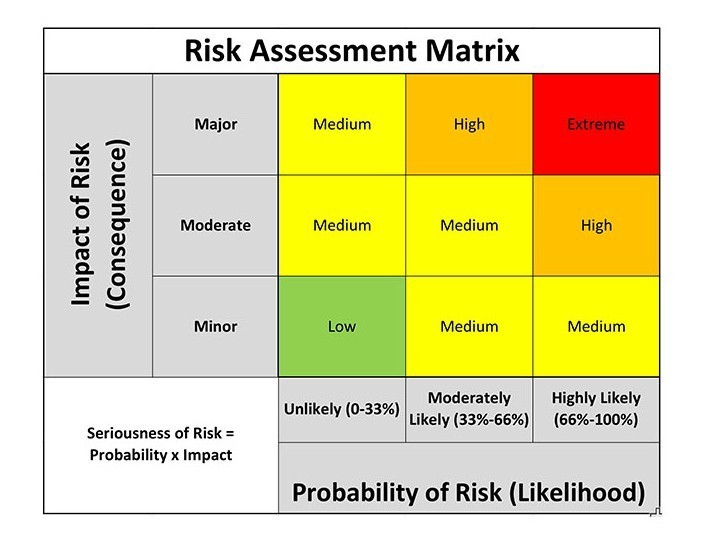Managing risk does not need to be a risky business

When it comes to leadership and management, managing risk is something that we don’t always talk about. Yet all businesses have risks. For example, what happens if you lose a key customer? What if an important member of your team decides to leave? How can you react if your business grows and you do not have the resources in place to handle the extra demand? Here are our top tips to identify and manage the risks in your business.
The first step is to identify the critical areas of your business. Look for the pinch points that can leave your business exposed. A common example is for a business to rely on one particular customer for their revenue i.e. to have all of your eggs in one basket. Another may be not having succession plans in place in the event of a key member of your team leaving.
Make a list of risks. Involve team members to check your thinking and add their ideas. In risk management critical thinking is to be welcomed and encouraged so avoid involving people who may be reluctant to speak up. Group-think is to be avoided at all costs.
Once you have identified all of your risks then ask yourself what the impact is and what is the likelihood of these events taking place. This will help you prioritise which risks need more attention and also keep a sense of proportion. Create a matrix like the one above.
Deal with impact first. If the situation happens then would the consequences be severe, moderate or low? Make sure your assessment of the risk is realistic.
Next, consider the probability of the risk happening. Assess the probability using the rating from unlikely to happen to highly likely to happen. Again, be realistic in your judgement.
Plot your assessment on the matrix. This will enable you to identify where your focus needs to be. For example, are there any risks in the extreme zone that require close attention or any actions required to reduce the impact and/or possibility?
Create an action plan, sometimes referred to as a risk register, to address each of the risks you have identified. Where necessary, delegate and assign responsibility for your team to take actions. However, remember that when delegating the accountability stays with you.
Keep your action plan under review. Consider making a review of your risks as a standing agenda for your management team meetings, taking action as required.
All businesses have risk. Managing risk cannot be ignored. Make sure managing risk is part of your culture and that you keep your risk management on your agenda.
Paul Beesley
Director & Senior Consultant
Beyond Theory

